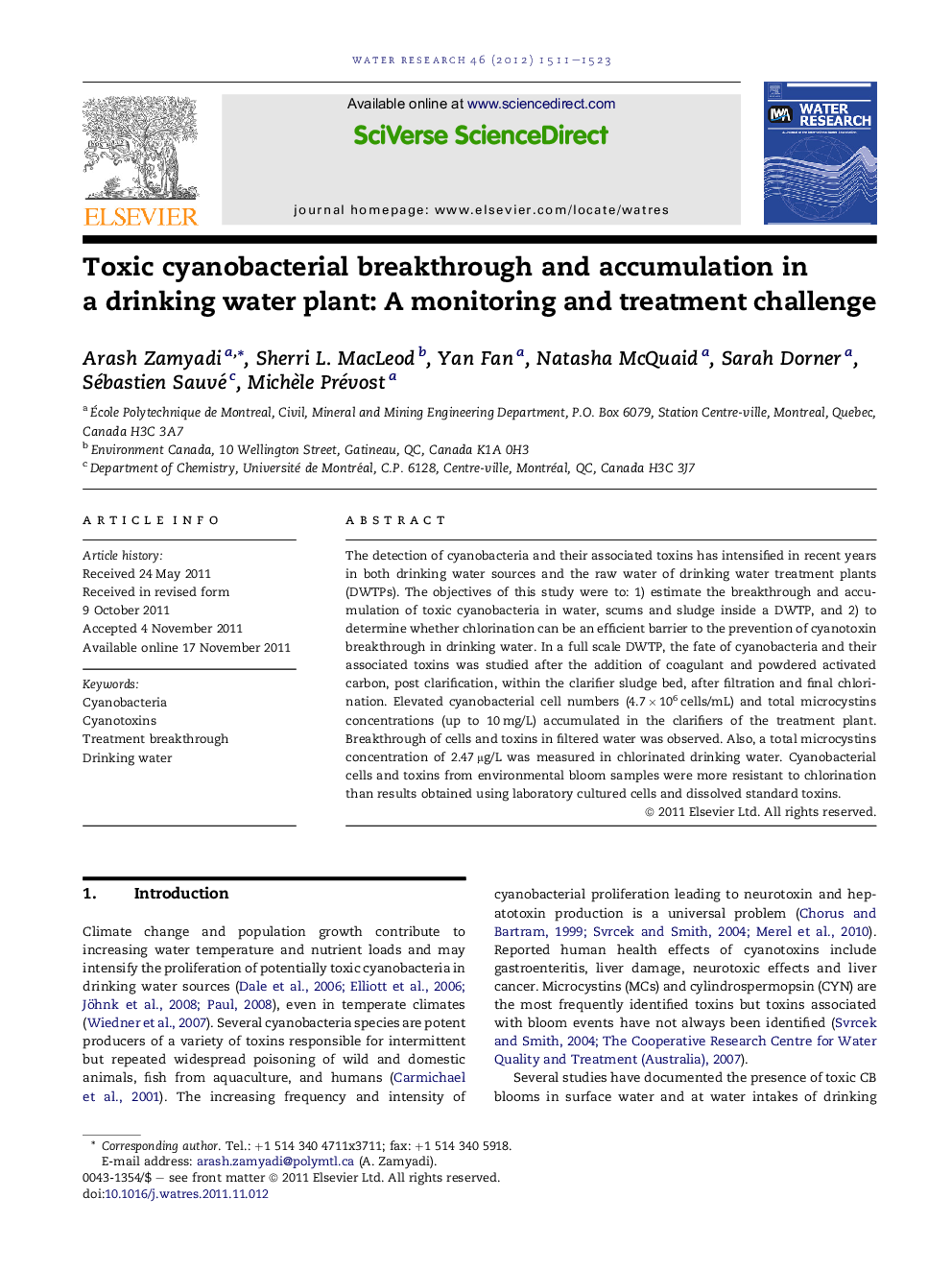| کد مقاله | کد نشریه | سال انتشار | مقاله انگلیسی | نسخه تمام متن |
|---|---|---|---|---|
| 4483631 | 1316894 | 2012 | 13 صفحه PDF | دانلود رایگان |

The detection of cyanobacteria and their associated toxins has intensified in recent years in both drinking water sources and the raw water of drinking water treatment plants (DWTPs). The objectives of this study were to: 1) estimate the breakthrough and accumulation of toxic cyanobacteria in water, scums and sludge inside a DWTP, and 2) to determine whether chlorination can be an efficient barrier to the prevention of cyanotoxin breakthrough in drinking water. In a full scale DWTP, the fate of cyanobacteria and their associated toxins was studied after the addition of coagulant and powdered activated carbon, post clarification, within the clarifier sludge bed, after filtration and final chlorination. Elevated cyanobacterial cell numbers (4.7 × 106 cells/mL) and total microcystins concentrations (up to 10 mg/L) accumulated in the clarifiers of the treatment plant. Breakthrough of cells and toxins in filtered water was observed. Also, a total microcystins concentration of 2.47 μg/L was measured in chlorinated drinking water. Cyanobacterial cells and toxins from environmental bloom samples were more resistant to chlorination than results obtained using laboratory cultured cells and dissolved standard toxins.
Figure optionsDownload high-quality image (133 K)Download as PowerPoint slideHighlights
► We monitored breakthrough of toxic cyanobacteria in a water treatment plant.
► We studied chlorination as a barrier to prevent breakthrough of cyanotoxins.
► 4.7 × 106 cells/mL of highly toxic cyanobacterial cells accumulated inside the plant.
► Maximum total microcystins concentration in chlorinated water reached 2.47 μg/L.
► Chlorination efficiency varies between cultured cells and bloom cells.
Journal: Water Research - Volume 46, Issue 5, 1 April 2012, Pages 1511–1523